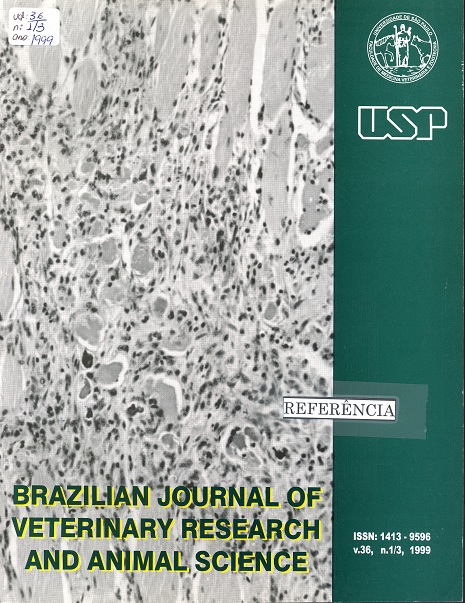Effect of different methods of forced molt on performance of laying hens
DOI:
https://doi.org/10.1590/S1413-95961999000300010Keywords:
Laying h, Sodium chlor, Potassium iod, ZincoxAbstract
One experiment was conducted to compare productive performance of laying hens of two strains: Babcock (light) and Hisex Brown (semi-heavy), exposed to forced molt according to the following treatments: A- Feed restriction (11 days), B- Salt restriction (42 days), C- high dietary zinc (2.0% of ZnO during 11 days) and D- High dietary iodine (0.6852% de KI during 42 days). The experimental design was a random block design. The birds (128 by strain) were 66 weeks old at the beginning of the molt phase. Birds on treatments A and C had better production in the second cycle and better feed conversion. Birds on treatment A produced the heaviest eggs with lowest quality (both internal and external). Percentage of production was not different among the strains tested, even though the lightweight birds showed a significantly better feed conversion and lower feed consumption. The semi-heavy strain produced significantly heavier eggs, with better internal quality but lower shell quality.Downloads
Downloads
Published
1999-01-01
Issue
Section
ZOOTECHNICS
License
The journal content is authorized under the Creative Commons BY-NC-SA license (summary of the license: https://
How to Cite
1.
Albuquerque R de, Mendonça Jr. CX de, Ghion E, Lma CG. Effect of different methods of forced molt on performance of laying hens. Braz. J. Vet. Res. Anim. Sci. [Internet]. 1999 Jan. 1 [cited 2025 Apr. 6];36(3):159-63. Available from: https://www.revistas.usp.br/bjvras/article/view/5761





